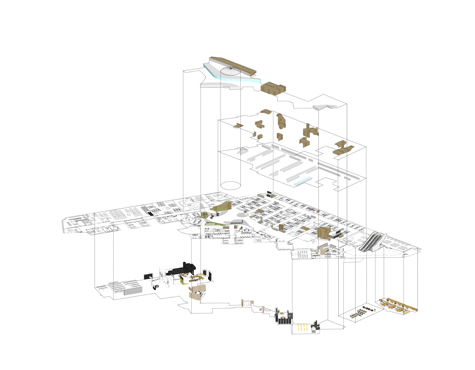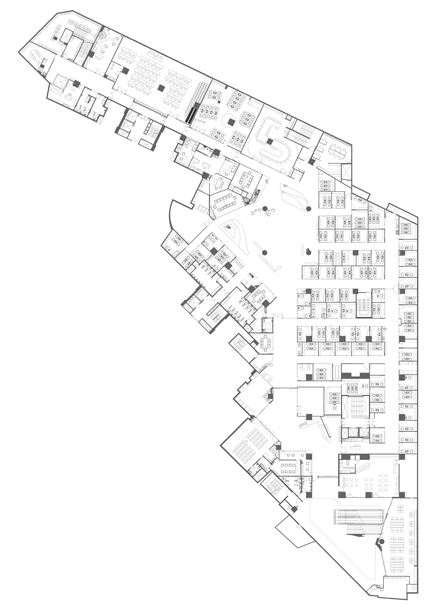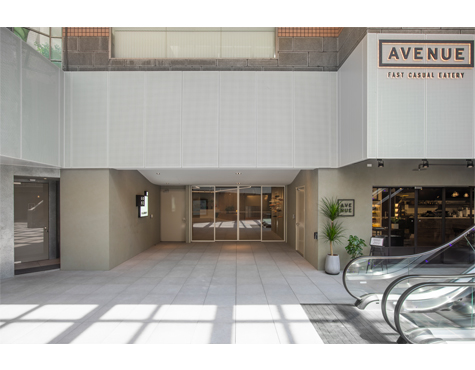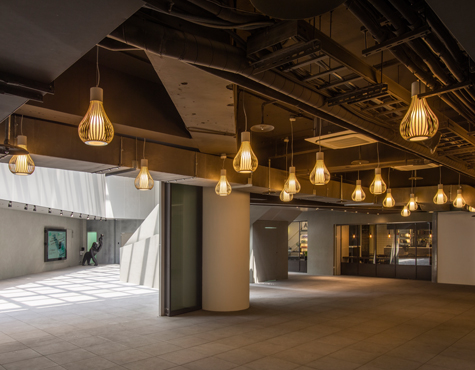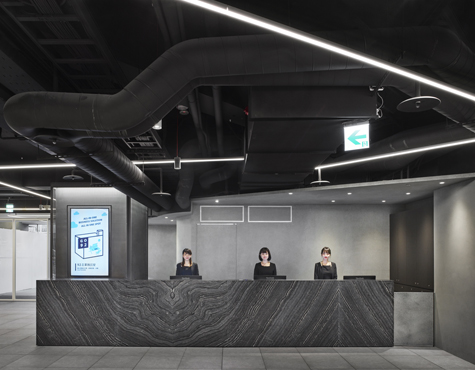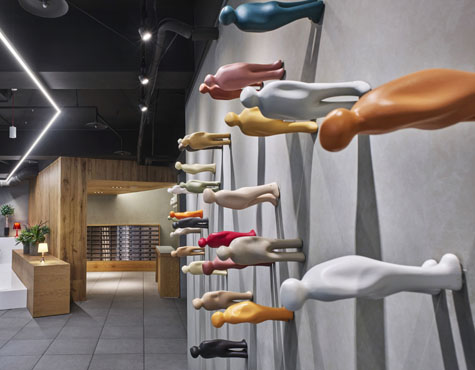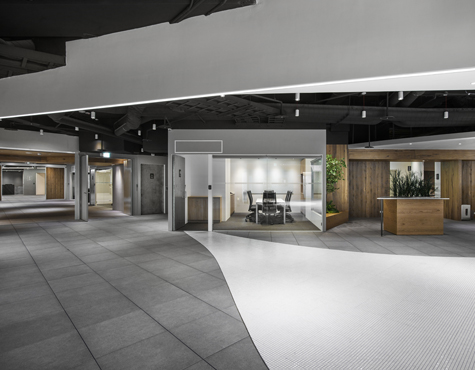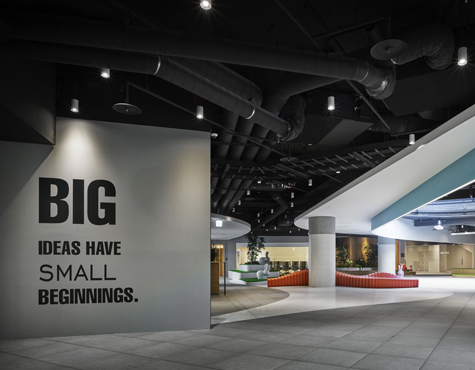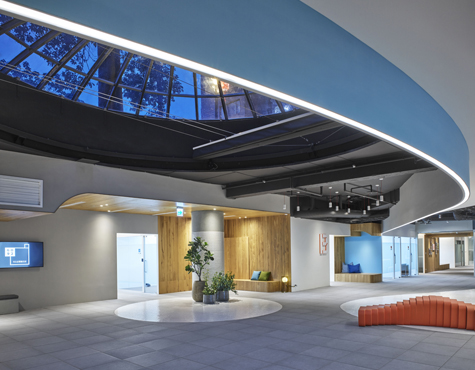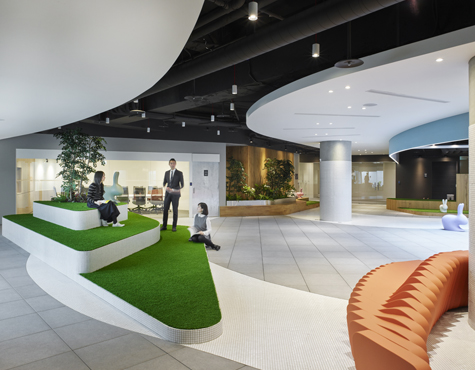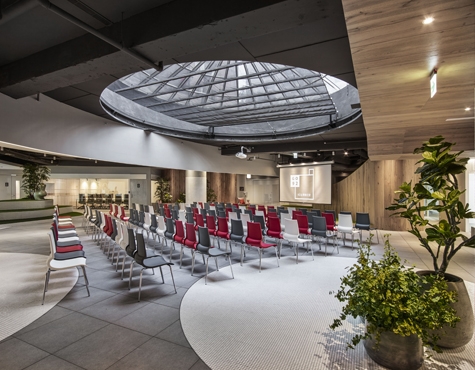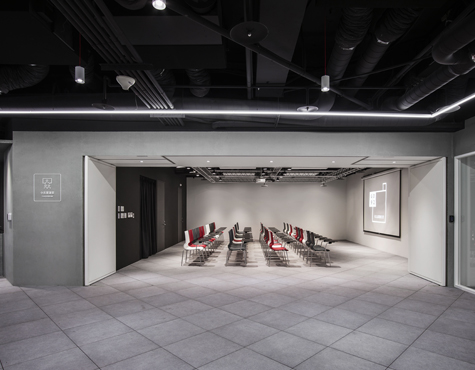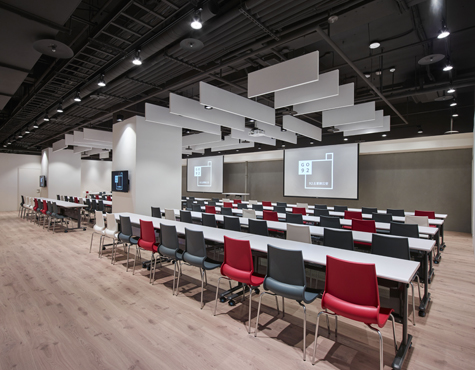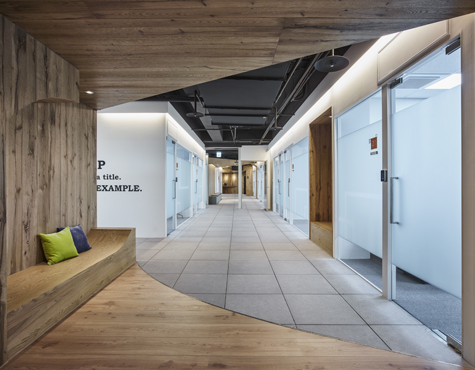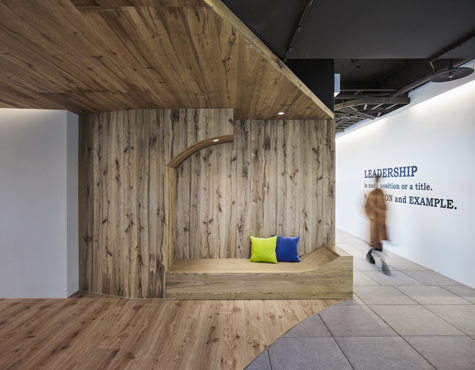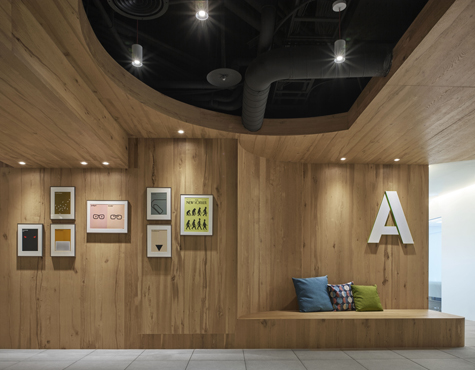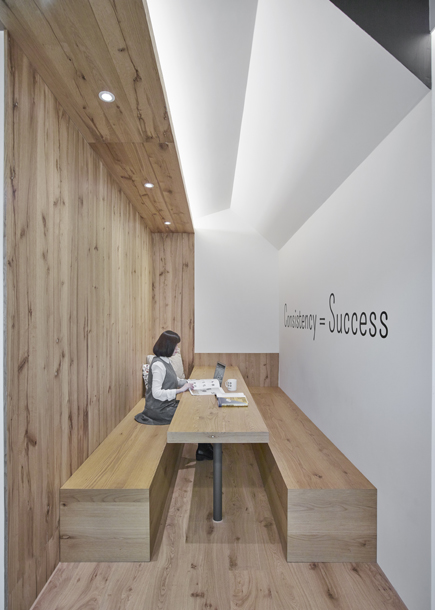AVENUE
"AVENUE| work + space" was a realization of a co-working space proposed by CJ Studio with a new spatial strategy. A traditional office is a private field where all activities visitors and employees engaged are governed by one centralized body. On the contrary, a micro-enterprise office's ownership is virtual and shared by all the collective members. Not integrated under one employer, activities are thus more dynamic and space more public. A "Micro-City" thus became an initial concept for designing the co-working space. Office rooms were treated as city blocks, and the public space was designed from an urban perspective.
Through a series of public spaces acting like urban squares in interior scale, a hierarchical space was provided. In addition to this characteristic, the layout also referred to a mechanism regulating not only the admission for entering the restricted area but also the dispersal of people in the office. These urban squares in a series are headed by an underground semi-outdoor space where people could rest during lunch time or hold various outdoor activities connecting to the urban pulses. The second urban square is the front foyer. It is an external pivot point, leading to leased space for temporary exhibition or conference, and a meeting place before entering the restricted area. The third comes to the internal lobby, a space between individual office clusters and sharing services. It is flooded with natural lights from the top sky window, and furnished with a streamlined ceiling, public furniture and green plants in such a way that it becomes a point for various social encountering and an emblem of the place spirit shared by all the members. Meanwhile, there still exist some spots that are easily accessible, and multi-purposed to exemplify a trend of "working out of office". People become more innovative and concentrative by shifting appropriately to an alternative environment. Sharing the common costs, disparate office units build up non-standard, crossing-boundary cooperation through office publicities.
A gigantic number of office units aggregated to form such a urban-like context that it referred to issues like array and accessibility. Interpreted as "Urban Corridors", office units were organized in a pattern similar to series of row houses. Moreover, arranged in circular loops to prevent dead ends, each unit's entry was not confined to a specific route. However, repetitive in great numbers, homogeneous office units might create a sense of disorientation. To improve distinguishable identities, "Urban Nodes" were introduced into office blocks. First, each block was assigned with a specific color to distinguish from the others. Second, suitable number of wooden sculpture-like public booths were inserted into blocks like nodes to improve orientation. Every two of the booths were never the same, each of which was equipped with furniture for public usage. Every booth was a spot where people could do the office work alternatively or rest during the break
Black, white and grey were adopted as the basic tone for the color scheme. Sky blue was picked to strengthen a freedom perception. Cold and pure material like cement, metal were chosen to contrast with tactile sensation of wood and organic texture of marble. Eventually, material combination continuously reorganizes its relationship along its path and evokes new perception intermittently.

